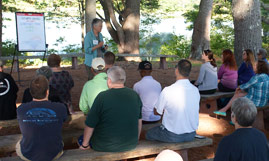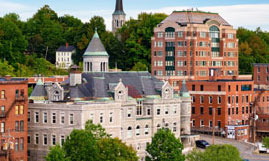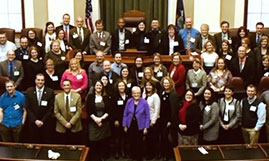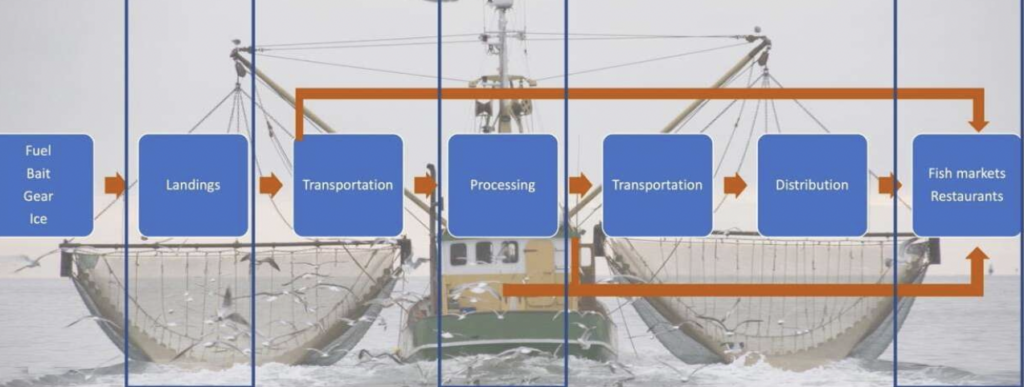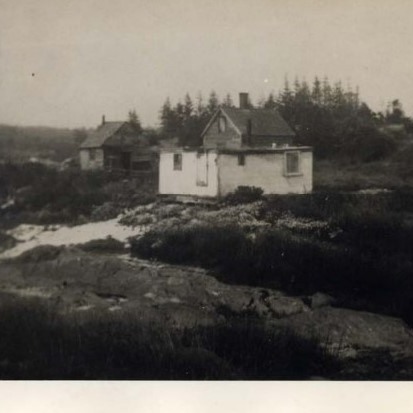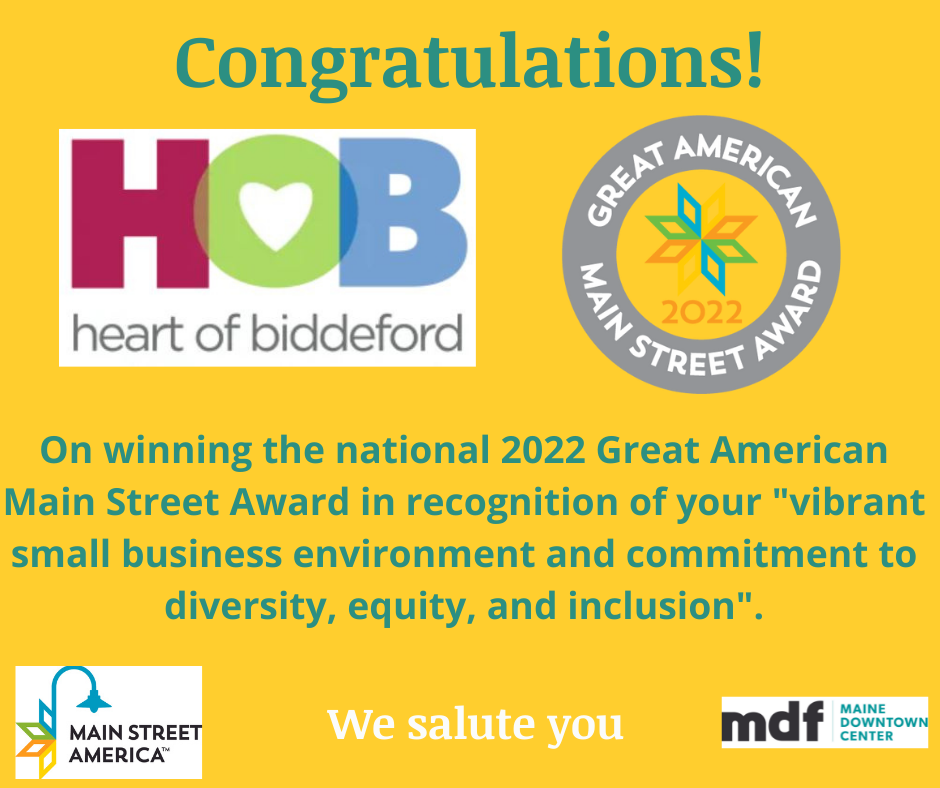CHICAGO, IL (May 16, 2022) – Main Street America announced today that Heart of Biddeford in Biddeford, Maine has received the prestigious Great American Main Street Award (GAMSA), which recognizes communities for their excellence in comprehensive preservation-based commercial district revitalization. The 2022 GAMSA designations, sponsored by The Hartford, were presented at the opening plenary for the Main Street Now Conference in Richmond, VA.
Selected by a national jury of community development professionals and leaders in the fields of economic development and historic preservation, Heart of Biddeford is being recognized for their vibrant small business environment and commitment to diversity, equity, and inclusion.
“Biddeford proves that equity and inclusion are the future of the Main Street movement,” said Main Street America President and CEO, Patrice Frey. “Their work with Black-owned businesses, formerly-incarcerated people, English Language Learners, and other groups has enriched the culture of the district and brought lasting economic change.”
For many years, Biddeford was colloquially known as “Trashtown” due to the presence of a large incinerator in the downtown mill district. The area was known for the heavy garbage trucks that regularly rolled into town and the unhealthy smoke that filled the air. Today, downtown Biddeford is known as a quintessential New England town. From a 4th generation bakery and the oldest diner in Maine to a thriving parks program and engaging annual festivals, Biddeford offers all the pleasures of coastal living with a growing array of amenities, cultural attractions, green space, and business opportunities.
Revitalization work led by the Heart of Biddeford organization began in 2004 with a focus on creating opportunities to bring people downtown through events and beautification initiatives. Becoming an accredited Main Street America program (2007), leading the Downtown Master Planning Process (2009-2011), and successfully advocating for the closure of the incinerator (2012) accelerated the organization’s efforts. With the support of forward-thinking city council and staff, redevelopment of the historic mill district spaces into residential and commercial spaces contributed to the positive transformation of downtown. Today the district’s 4.5% commercial vacancy rate is an additional point of pride and drastic improvement compared to 20.7% in 2006.
Heart of Biddeford’s continued success is made possible through their commitment to creating places of shared prosperity, equal access to opportunity, and inclusive engagement across all four points of the Main Street Approach. Notable examples of this commitment include partnering with veterans’ organizations to host parades downtown, hosting monthly meet-ups for female entrepreneurs, collaborating with Black Owned Maine to increase the organization’s capacity to incubate and promote Black-owned businesses in the district, and raising the inaugural Pride flag in the city.
“This is a huge honor for Heart of Biddeford, and we accept this award on behalf of thousands of volunteers, our municipal, cultural and service partners, and the business community,” said Delilah Poupore, Executive Director at Heart of Biddeford. “While we hope to become more inclusive and sustainable over time, we are very proud of our efforts to innovate during challenging times and to work in a connected way toward a common vision.”
Additional points of pride that have earned Heart of Biddeford GAMSA status include its commitment to historic preservation and community-based efforts that share the full story of their town and reinforce the sense of place that makes Biddeford unique. Heart of Biddeford’s partnerships with former mill workers and “Secret Spaces, Hidden Places” mill district tours ensures that future generations understand and appreciate the city’s rich heritage. Concurrently façade improvement grants and small-scale development projects have invested in its future by transforming once neglected spaces into attractive places to live and work.
“We are so proud of Heart of Biddeford for earning a GAMSA,” said Anne Ball, Program Director at Maine Development Foundation . “They are an open and welcoming community and embrace their past while welcoming newcomers to their wonderful historic mill town. They are an exceptional statewide leader, and we learn from them every day.”

